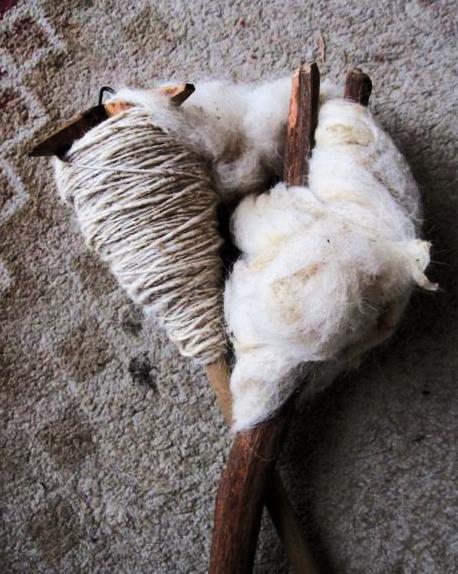Spindles used by Bedouin throughout Arabia and the Levant have several variations historically, but they tend to be high-whorl, either rectangular or cross-bar, with a hook and a long shaft.
Bedouin women spin seated or standing, with the spindle occasionally free-hanging, but more often rolling against the thigh, partially suspended. The drafting method is a light bouncing motion. Since the wool is not usually prepped, apart from some washing or beating with sticks, it must be teased a bit by hand during the spinning process.
The wool is wound around a distaff, which may simply be a split stick. The distaff is held under the arm or stuck in the ground, so that the fiber is above the drafting hand.
Spindles for sale in the market, Souq Waqif, Doha, Qatar
Bedouin Shepherdess, Library of Congress image from 1932, Palestine area, Matson Collection
Bedouin shepherdess from Sharon, between 1920-1933, Library of Congress image
